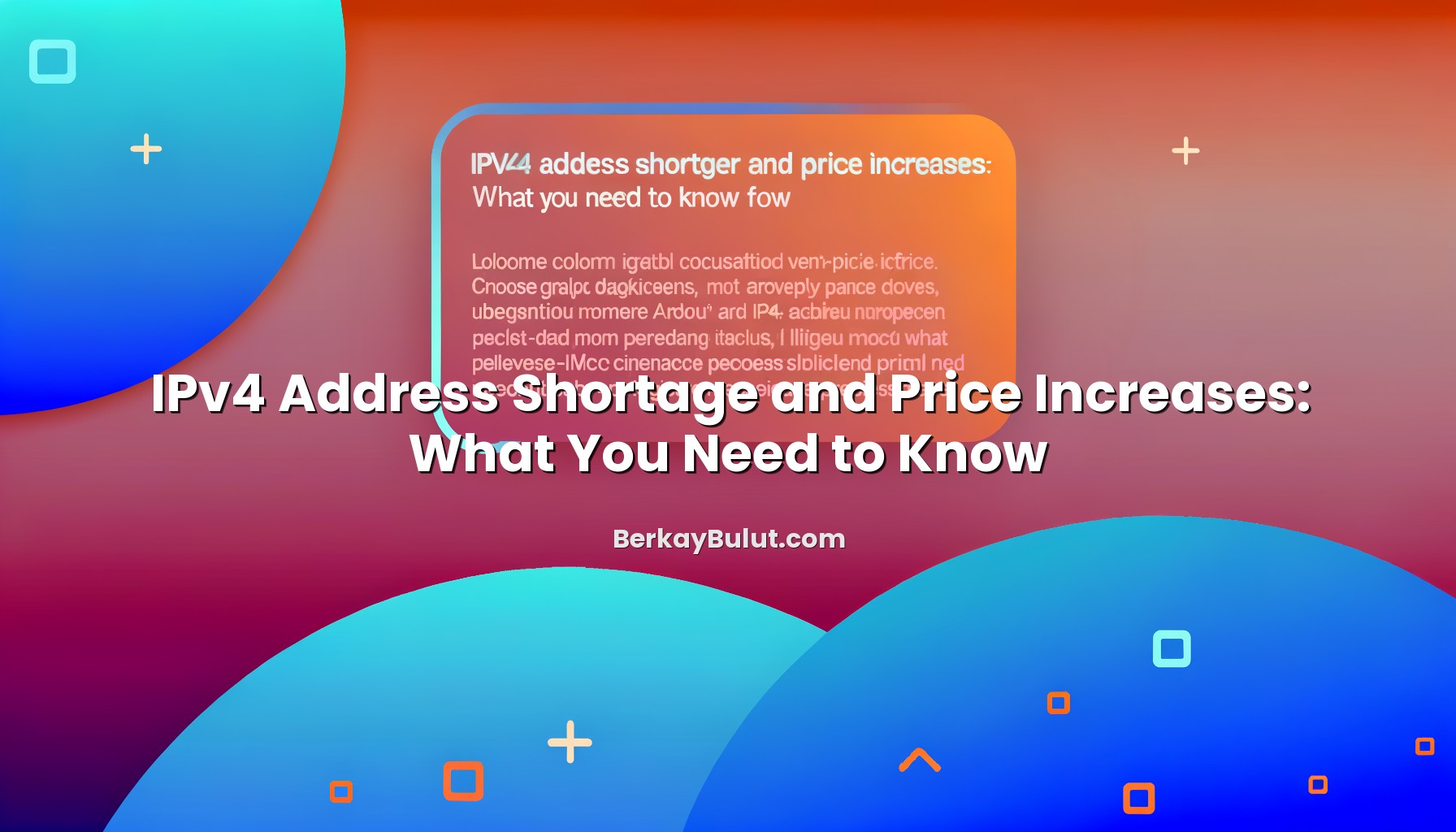Choosing the right data center location and server region is one of those decisions that quietly shapes everything about your website: SEO performance, loading speed, user experience, and even your long-term infrastructure costs. In many architecture design sessions and capacity planning meetings, I have seen teams obsess over frameworks, databases, and caching layers while completely ignoring where the server actually lives. Yet a poorly chosen region can easily add 100–200 ms of latency to every request, push Core Web Vitals in the wrong direction, and make you look slower than your competitors in search results. In this article, we will walk through how data center geography affects SEO and speed, what metrics you should care about, and how to make a practical decision whether you are running a local business website, a regional e‑commerce platform, or a global SaaS product. The goal is simple: help you pick a data center and server region that gives you the fastest real-world experience for your users without creating SEO headaches.
How Data Center Location Affects SEO and Website Speed
At a high level, data center location is about physical distance between your users and your origin server. That distance directly affects latency and Time to First Byte (TTFB), which in turn influence SEO and user experience.
Latency and Core Web Vitals
Latency is the time it takes for a request to travel from the user’s browser to your server and back. The farther your data center is from the visitor, the higher the latency. Even with good networks, crossing continents can easily add hundreds of milliseconds.
Search engines increasingly use performance signals such as Core Web Vitals (LCP, FID/INP, CLS). While not the only ranking factor, slow TTFB and long LCP due to high latency can drag your pages down compared to similarly optimized competitors with closer servers. In practice, simply placing your server in the same region as your main audience often gives an immediate TTFB improvement without touching your code.
Geographic Relevance and Local SEO
Search engines also look at geographic relevance. If you target users in a specific country, hosting in or near that country is a supporting signal (alongside ccTLDs, language, address data, and business listings). For example, a Turkish e‑commerce site targeting only Turkey will normally benefit from a data center in Turkey or a nearby region with excellent connectivity to Turkish ISPs.
For a more infrastructure-focused perspective on this topic, you can also check the Turkish article Veri Merkezi Lokasyonu ve Sunucu Bölgesi Seçimi, which discusses similar decisions from a local point of view.
Availability and Reliability
Location is not only about speed. A data center’s region is tied to its power grid, natural disaster profile, and network ecosystem. Regions with better infrastructure and multiple carriers usually offer higher uptime and more stable routing. This indirectly affects SEO: frequent outages or long downtime windows hurt crawlability and user trust, eventually impacting rankings.
Understanding Latency, Network Routes and Real User Location
Before you choose a data center region, you should understand where your real users are and how traffic actually flows across the internet from them to your server.
Analyzing Your Audience Geography
Start with analytics data. Tools like web analytics dashboards or log analyzers show you:
- Top countries and cities by sessions or page views
- Device types (mobile vs desktop), which affect sensitivity to latency
- Traffic sources (organic, paid, social) by country
If 70% of your users are in one country or region, it rarely makes sense to host your origin server far away from that majority, unless there are strong legal or cost reasons.
Measuring Latency and Network Paths
Latency is not purely about distance; it is also about network routing. Two data centers in neighboring countries can behave very differently depending on how ISPs peer with them. To evaluate this, you can:
- Use
pingandtraceroutefrom different test locations or online tools - Measure TTFB with browser-based tools (e.g., Lighthouse, WebPageTest-like services)
- Enable Real User Monitoring (RUM) to collect actual performance from visitors’ browsers
Look for regions where the median latency and TTFB are lowest for your main audience. If you see strange routes (for example, traffic between neighboring countries going through another continent), that often indicates poor peering and a suboptimal region choice.
Single Region vs Multi-Region Architectures
For small and medium projects, a single well-chosen region is often enough. But for larger or global projects, consider:
- Active–passive multi-region: one primary region, one backup for disaster recovery
- Active–active multi-region: several regions serving traffic simultaneously, with load balancing and geo-routing
- Edge or CDN caching in front of a central origin to shorten distance for static assets
Multi-region solutions are more complex, but they can drastically reduce latency for global audiences while improving resilience.
Criteria for Choosing the Right Data Center Location
Once you know your audience distribution and latency profile, you can evaluate specific regions and data centers using clear criteria.
1. Proximity to Primary Users
The most obvious factor: place your server near your main audience. If your traffic is 80% from Western Europe, hosting in Western Europe usually makes more sense than in a distant continent. The small cost difference between regions is rarely worth the performance loss and SEO risk.
2. Network Connectivity and Peering
Ask your provider (for example, DCHost) about:
- Which carriers and ISPs they peer with
- Whether they are connected to major Internet Exchange Points (IXPs)
- Average latency benchmarks to your target countries
A data center with strong peering can outperform a physically closer but poorly connected one. Always validate marketing claims with your own latency tests when possible.
3. Reliability, Power and SLAs
Look at uptime guarantees, redundancy levels and certifications. Key questions include:
- Is there redundant power (N+1 or better) and cooling?
- What is the historical uptime for that region?
- Are there clear SLAs and support response times?
Stable infrastructure ensures search engine bots can crawl your site consistently and users experience fewer disruptions, which indirectly supports SEO.
4. Legal, Compliance and Data Residency
Some industries and countries have strict data residency rules. If you handle personal data for EU residents, for example, you must think about GDPR, data transfer mechanisms, and where logs and backups are stored. Hosting in a compliant region can make audits and legal processes smoother and protect you from penalties.
5. Cost vs Performance Trade-Offs
Cheaper is not always better. A low-cost region with high latency to your users may increase bounce rates, reduce conversion, and hurt SEO, costing you far more than you saved on hosting fees. Evaluate:
- Cost per month vs expected revenue impact of speed improvements
- Bandwidth pricing in each region
- Scaling costs (CPU, RAM, storage) as traffic grows
In many cases, paying slightly more for the “right” region near your users is the most profitable choice.
6. Future Growth and Scalability
Think beyond your current audience. If you plan to expand into new markets, choose providers and regions that make scale-out easy: adding more servers, enabling additional regions, or integrating with a CDN. Solutions from providers like DCHost that offer multiple data center locations can simplify this transition later.
How Server Region Interacts with SEO Settings
Server location is only one piece of the SEO puzzle. It interacts with your domain strategy, hreflang setup, geo-targeting, and protocol choices.
Domain and Geo-Targeting
Your server region should be consistent with your domain strategy:
- ccTLD (country-code domains) like
.de,.tr,.frsend strong geographic signals. Hosting in or close to the target country supports that signal. - gTLD (generic domains) like
.com,.netrely more on content, language, business data and search console geo-targeting settings.
For international sites, you will likely use separate subdirectories or subdomains per language/region. Make sure your hosting and routing setup supports this structure cleanly.
Hreflang and Multi-Language SEO
If you serve content in multiple languages, hreflang tags tell search engines which version of a page is meant for which region. While hreflang is mostly an on-page and sitemap configuration, poor performance from a remote data center can still hurt localized pages. A user in Spain landing on a Spanish version of your site hosted far away will still experience slow loading, even if hreflang is perfect.
CDN vs Origin: Who Should Be Close to Whom?
Many people assume that using a CDN makes origin location irrelevant. In reality:
- A CDN caches static assets (and sometimes HTML) closer to users.
- Your origin server still matters for cache misses, dynamic pages, APIs, and first-time visits.
To understand this better, you can read What Is a CDN and How Does It Work?, which explains how edge caching interacts with your hosting infrastructure. The optimal strategy is usually: place your origin in a region that is central to your main audience, then use a CDN to cover remote or secondary markets.
Protocol Choices: HTTP/2, HTTP/3 and TLS
Modern protocols can reduce the negative impact of latency. Enabling HTTP/2 and HTTP/3 (QUIC) helps browsers multiplex requests and recover more gracefully on high-latency networks. For a detailed walkthrough, see HTTP/2 and HTTP/3 (QUIC) Explained: How to Enable Them on Your Hosting Server.
Similarly, running your site over HTTPS with a modern TLS setup is now a baseline SEO requirement. If you are still planning your HTTP→HTTPS migration, follow the guide Migrating from HTTP to HTTPS: An SEO-Safe Step-by-Step SSL Migration Guide to avoid ranking issues.
Practical Scenarios and Decision Framework
To make all of this more concrete, let’s walk through some common scenarios and how I typically recommend choosing data center regions.
Scenario 1: Local Business Website
Imagine a dentist in Istanbul, a restaurant in Berlin, or a local law firm in London. Their traffic is 90–100% from one city or country.
- Choose a data center in the same country, or the nearest city with excellent connectivity.
- Use a ccTLD if possible (e.g.,
.tr,.de), and ensure NAP (name, address, phone) consistency across listings. - Focus on fast TTFB for mobile visitors and good Core Web Vitals.
In this case, paying extra for distant “premium” regions is usually unnecessary. A well-run local region (for instance via a provider like DCHost with a nearby data center) is often both faster and cheaper.
Scenario 2: Regional E‑Commerce (Multi-Country)
Consider an e‑commerce site targeting several neighboring countries (e.g., across Europe or the Middle East). Traffic is spread but still mostly within one broader region.
- Pick a central region with strong connectivity to all target countries.
- Use a CDN to improve asset delivery for more distant countries.
- Set up language- or country-specific sections and configure hreflang properly.
- Monitor performance from each country and be ready to add a second region if one market grows significantly.
This setup gives you a good balance between simplicity and performance while keeping SEO management (sitemaps, hreflang, structured data) manageable.
Scenario 3: Global SaaS Platform
A global SaaS product with users in North America, Europe, Asia and beyond faces a different challenge. A single region will inevitably be far from some users.
- Start with one primary region where most customers and your team are located.
- Put a strong CDN in front of static assets and possibly cache HTML for anonymous users.
- As latency or growth demands, move to multi-region active-active for the application and database (if architecture allows).
- Use global load balancing or geo-DNS to route users to the nearest healthy region.
This is more complex but can significantly improve global performance and resilience, which both users and search engines appreciate.
A Simple Decision Framework
When advising teams, I often use a simple framework:
- Map your users: Use analytics to find the top 3 countries by traffic.
- Test candidate regions: Measure latency and TTFB from those countries to potential data centers.
- Evaluate constraints: Legal requirements, budget, vendor options like DCHost, internal team skills.
- Pick the best single region for now, close to the majority of users.
- Add CDN for distant or emerging markets.
- Reassess annually or after major traffic shifts; add regions if justified.
Implementation Tips: Testing, Monitoring and Migrating Without SEO Loss
After choosing your ideal data center region, you still need to implement the change cleanly to avoid SEO or uptime issues.
Testing Before Full Migration
Before moving production traffic:
- Set up a staging environment in the new region.
- Run synthetic tests (Lighthouse, WebPageTest-like tools) from your target countries.
- Check TTFB, LCP and overall load time comparisons with your current region.
- Verify that all URLs, redirects, HTTPS configuration and cookies behave exactly as expected.
If you are also tuning your web server and application, the article sunucu hızlandırma rehberi: İşte ipuçları offers useful ideas for squeezing more performance from your stack.
Zero-Downtime Migration and DNS Strategy
A poorly executed migration can cause downtime and crawling issues. To avoid that, follow a structured process similar to the one described in How to Migrate Your Website to a New Hosting Provider with Zero Downtime:
- Lower DNS TTL well before the move.
- Clone your site and database to the new region.
- Run parallel tests with hosts file overrides.
- Switch DNS once everything is confirmed.
- Keep the old server online for a while to catch late DNS resolvers.
This way you change your data center location with minimal user impact and no SEO penalty.
Continuous Monitoring After the Move
Once migration is complete:
- Monitor uptime and response times from multiple geographic locations.
- Track Core Web Vitals in Search Console and RUM tools.
- Watch for crawl errors, sudden ranking drops, or changes in organic traffic per country.
If you see performance regressions for a particular country, consider adding a CDN PoP focus there, or in advanced cases, evaluating a second application region.
Conclusion: Turn Location into a Competitive Advantage
Data center location and server region decisions often happen once, early in a project, and then get forgotten for years. Yet they quietly determine how fast your pages feel, how stable your site is, and how search engines perceive your performance. By aligning your server region with your real audience, validating latency and peering, and combining that with modern protocols, HTTPS, and a well-configured CDN, you can turn infrastructure geography into a genuine competitive advantage.
If you are planning a new project or considering a migration, take a step back and review where your users actually are and how your current region serves them. Use the decision framework in this article, consult reliable providers such as DCHost that offer multiple regions, and follow best practices for zero-downtime moves and SEO-safe changes. With a bit of upfront analysis and careful execution, you can deliver a noticeably faster experience to your visitors, support your SEO strategy, and build a hosting architecture that is ready for the next phase of your growth.










